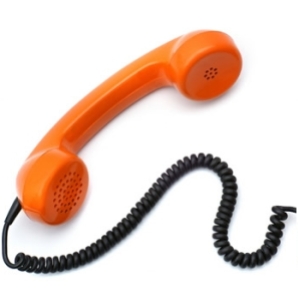 The amplified telephone industry has relied on their own methods to measure the volume control gain, tone control and other acoustic parameters of their products. This has made if very difficult to compare one manufacturer’s phone with another manufacturer’s phone. The TIA-4953 is a voluntary standard applicable to high-gain amplified telephones that provides measurement procedures and performance requirements for telephone volume, tone, and ringer level controls to meet the needs of mild, moderate, and severe hearing loss. It outlines standardized testing methods so that the above performance of different telephone models can be compared. This new standard requires that phone meet hearing aid compatibility performance outlined in TIA-1083-A.
The amplified telephone industry has relied on their own methods to measure the volume control gain, tone control and other acoustic parameters of their products. This has made if very difficult to compare one manufacturer’s phone with another manufacturer’s phone. The TIA-4953 is a voluntary standard applicable to high-gain amplified telephones that provides measurement procedures and performance requirements for telephone volume, tone, and ringer level controls to meet the needs of mild, moderate, and severe hearing loss. It outlines standardized testing methods so that the above performance of different telephone models can be compared. This new standard requires that phone meet hearing aid compatibility performance outlined in TIA-1083-A.
 A few key measurement parameters addressed in TIA-4953 include handset “conversational gain” and ringer amplification/tone requirements. With handset conversational gain, the unamplified level from the handset is 70 dB SPL, the same level that would occur for face-to-face conversation at 1 meter (64 dB SPL) with a +6 dB SPL correction factor for monaural listening (64 dB SPL + 6 dB SPL correction factor = 70 dB SPL). With this new standard, any amplified telephone labeled as TIA-4953 compliant claiming 30 dB of gain has undergone standardized testing that confirms that the handset produces 100 dB SPL of output (70 dB SPL + 30 dB gain) when the volume control wheel is set to max. In addition, TIA-4953 requires lower frequency ringer tones to make it easier for people with high frequency hearing loss to hear the phone ring as well as ringer volume levels necessary for those with mild, moderate, and severe hearing loss.
A few key measurement parameters addressed in TIA-4953 include handset “conversational gain” and ringer amplification/tone requirements. With handset conversational gain, the unamplified level from the handset is 70 dB SPL, the same level that would occur for face-to-face conversation at 1 meter (64 dB SPL) with a +6 dB SPL correction factor for monaural listening (64 dB SPL + 6 dB SPL correction factor = 70 dB SPL). With this new standard, any amplified telephone labeled as TIA-4953 compliant claiming 30 dB of gain has undergone standardized testing that confirms that the handset produces 100 dB SPL of output (70 dB SPL + 30 dB gain) when the volume control wheel is set to max. In addition, TIA-4953 requires lower frequency ringer tones to make it easier for people with high frequency hearing loss to hear the phone ring as well as ringer volume levels necessary for those with mild, moderate, and severe hearing loss.

Excellent Post that will be appreciated by audiologists and consumers alike.
Thanks so much; that is the goal of this blog. Your support and feedback is much appreciated.